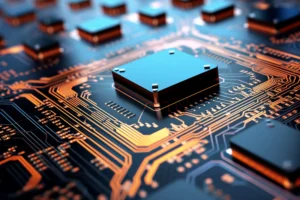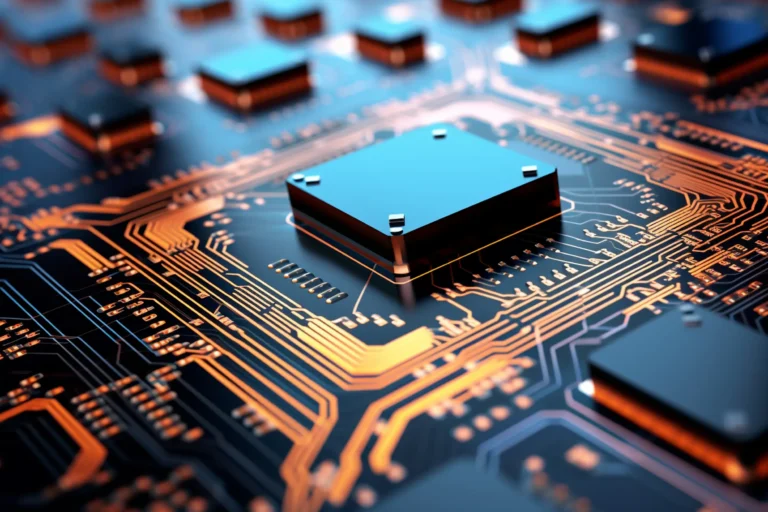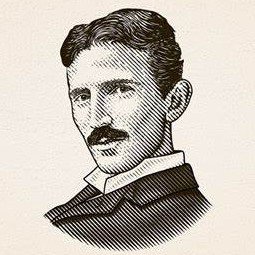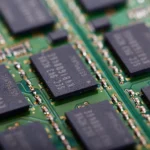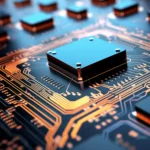Introduction to Nikola Tesla
Nikola Tesla, a name that resonates with innovation and ingenuity, was born on July 10, 1856, in the small town of Smiljan, Croatia. His early life laid the foundation for an extraordinary career as an inventor and electrical engineer, one that would have a profound impact on modern science and technology. Tesla demonstrated an early aptitude for understanding complex concepts, often showcasing his inventive prowess in childhood. His education commenced in the local village school and later extended to the Polytechnic Institute in Graz, Austria, where he deepened his knowledge of mathematics, physics, and engineering.
In 1884, seeking better opportunities, Tesla emigrated to the United States, arriving in New York City, where he initially found work with the prominent inventor Thomas Edison. However, their differing views on electrical systems led to a professional rift, prompting Tesla to pursue his own vision of electrical innovation. This journey marked the beginning of Tesla’s singular contributions to the world. Renowned for his work on alternating current (AC) electricity, he laid the groundwork for modern power systems and developed technologies that would transform industries.
Tesla was not just an inventor but also a visionary who foresaw the potential of wireless communication and energy transmission. His theories and inventions extended beyond electrical engineering, spanning fields such as robotics, radar, and wireless energy. Throughout his life, Tesla obtained numerous patents, many of which remain foundational in contemporary engineering practice. Despite facing numerous challenges, including financial difficulties and competition from contemporaries, Tesla’s relentless pursuit of knowledge and passion for innovation continue to inspire scientists, engineers, and inventors around the world.
Early Life and Education
Nikola Tesla was born on July 10, 1856, in the small village of Smiljan, located in what is now Croatia. He was the fourth of five children in a Serbian Orthodox family. His father, Milutin Tesla, was a priest and a writer, while his mother, Georgina Đuka Tesla, was an inventive spirit, known for creating household appliances and devices. This nurturing environment sparked Tesla’s early interest in inventiveness and innovation. From a young age, he demonstrated an insatiable curiosity about the natural world, particularly regarding electricity and magnetism.
Tesla’s passion for understanding electrical phenomena intensified during his teenage years, particularly following a series of self-directed studies that laid the groundwork for his academic pursuits. He finished his secondary education in Karlovac and subsequently enrolled at the Technical University of Graz in Austria in 1875. There, Tesla excelled in his studies in physics and mathematics, earning a reputation as a diligent student. His engagement with alternate current (AC) concepts began during this time, which would later become a cornerstone of his groundbreaking innovations.
Despite demonstrating remarkable aptitude, Tesla’s time at Graz was fraught with challenges. He experienced intense familial pressures and financial hardships, which ultimately affected his academic progression. After two years, he left the Technical University of Graz without completing his degree. Subsequently, he attended the University of Prague, though his stay was brief due to personal and financial difficulties. These setbacks, however, only fueled his determination to forge a career in the field of electrical engineering.
Ultimately, Tesla’s early life experiences and education characterized a relentless pursuit of knowledge and innovation. His formidable challenges would later manifest into groundbreaking technologies that changed the world. The combination of a supportive family background, an early interest in electricity, and his academic pursuits at esteemed institutions laid the foundation for Tesla’s extraordinary contributions to science and technology.
Career Beginnings in Europe
Nikola Tesla’s career embarked in Europe, where he cultivated a deep interest in electrical engineering during the late 19th century. Born in the Austrian Empire (now Croatia), he initially pursued his studies in engineering and physics at the Technical University in Graz and later continued in Prague. Tesla’s keen intellect and unyielding determination led him to explore various innovations, which ultimately shaped the foundation of his career.
After completing his education, Tesla sought employment opportunities in the booming field of electrical engineering. His first notable position was with the Continental Edison Company in France, owned by the prominent inventor Thomas Edison. During his tenure, Tesla made significant contributions, particularly in improving the design of electrical equipment. His innovative spirit shone through as he devised enhancements that increased the efficiency of generators. However, despite these accomplishments, Tesla’s relationship with Edison proved to be tumultuous due to differing philosophies on electrical systems. While Edison championed direct current (DC), Tesla believed in the superiority of alternating current (AC), leading to ideological clashes.
In pursuit of his vision, Tesla left Paris for the United States in 1884. His arrival in New York marked a pivotal moment in his career; it was there that he first encountered Edison face-to-face. Seeking to further his ambitions, Tesla quickly transitioned through several roles, including working for a rival company, before eventually setting out on his own entrepreneurial journey. This transition was not without challenges. The competitive environment of the electrical engineering sector at that time presented significant hurdles, including financial instability and the need to establish credibility as an inventor amidst established giants. However, Tesla’s tenacity and innovative mindset propelled him forward, setting the stage for his monumental achievements that would follow in the years to come.
Key Inventions and Patents
Nikola Tesla, a prominent inventor and electrical engineer, is renowned for a multitude of groundbreaking inventions that have significantly influenced modern technology. Among his most notable contributions is the development of the alternating current (AC) system, which revolutionized the way electricity is transmitted and utilized. The AC system enabled efficient long-distance electricity distribution, making it possible for cities and industries to harness electrical power on an unprecedented scale. This innovation played a crucial role in the “War of Currents,” where Tesla’s AC system ultimately triumphed over Thomas Edison’s direct current (DC) system, leading to its widespread adoption.
Another significant invention of Tesla’s is the Tesla coil, a type of resonant transformer circuit. Designed in 1891, the Tesla coil facilitates the generation of high-voltage, low-current electricity and is utilized in applications ranging from radio transmission to medical devices. The Tesla coil’s ability to produce spectacular electrical discharges has not only captivated audiences in demonstrations but has also paved the way for advancements in wireless communication technology.
Tesla’s work extended beyond AC electricity and the Tesla coil; he made substantial contributions to wireless communication, envisioning a world where information could be transmitted without wires. His experiments in radio technology laid the groundwork for modern wireless communications, including radio and television. Tesla was awarded significant patents related to radio frequency transmission that contributed to the unfolding of a new era in communications.
Throughout his lifetime, Tesla obtained over 300 patents across various domains, showcasing his diverse expertise in electromagnetism and electrical engineering. These patents reflect his innovative spirit and commitment to scientific advancement, influencing subsequent generations of inventors and engineers. Tesla’s legacy, rooted in his key inventions and patents, continues to be felt across multiple fields, affirming his position as a pivotal figure in the annals of scientific history.
The War of Currents
The late 19th century witnessed a pivotal struggle in the field of electrical engineering known as the War of Currents. This conflict primarily involved two competing technologies: Nikola Tesla’s alternating current (AC) system and Thomas Edison’s direct current (DC) system. Tesla, a visionary inventor, championed the benefits of AC power, which allowed electricity to travel over long distances with reduced energy loss. In contrast, Edison promoted his DC system, which was limited in range and required power stations to be located close to consumers, making it less practical for widespread adoption.
As these two systems vied for dominance, the public became increasingly engaged in the debate surrounding the safety and efficiency of both methods. Edison, leveraging his established reputation, launched an aggressive campaign to undermine AC technology. His tactics included public demonstrations designed to showcase the perceived dangers of alternating current. This included the shocking of animals, which was intended to instill fear and dissuade the public from accepting Tesla’s innovations. Conversely, Tesla and his collaborators worked tirelessly to demonstrate the advantages of AC, emphasizing its ability to transmit electricity over greater distances with less energy loss.
The turning point in the War of Currents came with the 1893 World’s Columbian Exposition in Chicago, where Tesla showcased the capabilities of his AC system through an impressive lighting display. This event significantly shifted public perception and garnered widespread support for AC power. Furthermore, the successful implementation of Tesla’s AC technology at hydroelectric plants, such as the one at Niagara Falls, solidified its viability and proved superior to Edison’s DC system.
Ultimately, the War of Currents culminated in Tesla emerging victorious, leading to the global adoption of alternating current as the predominant means of electrical power distribution. This monumental shift not only transformed the electrical landscape but also laid the groundwork for the modern electrical grid that we rely on today.
Later Years and Financial Struggles
Nikola Tesla’s later years were marked by a paradoxical blend of continued innovation and financial hardship. Despite the brilliance exemplified in his earlier inventions, such as the alternating current system and the Tesla coil, Tesla struggled to translate his scientific genius into financial success. One of the primary factors contributing to his financial difficulties was his inability to successfully commercialize many of his inventions. In an era dominated by industrial moguls who prioritized profit, Tesla’s idealistic approach often clashed with the pragmatic interests of potential investors.
Throughout the 1920s and beyond, Tesla engaged in various projects including the development of wireless transmission of electricity. However, many of these ventures lacked the necessary backing and funding, leading to stalled projects and increasing debts. Tesla’s visionary concepts, while groundbreaking, often faced skepticism from financiers who were more focused on immediate returns rather than investing in what they deemed speculative or untested technologies. This tension further alienated him from key figures within the scientific community and investors alike.
Moreover, Tesla’s unique personality traits played a significant role in his relationships, both positive and negative. He was often perceived as eccentric, preferring to work in isolation rather than conforming to conventional scientific collaboration. This isolation fostered a sense of mistrust among investors, leading to missed opportunities for financial partnerships that could have bolstered his inventions. While Tesla’s innovations paved the way for modern electrical systems, his lack of financial acumen ultimately left him struggling to sustain his later endeavors.
By the time of his death in 1943, Tesla had amassed over 300 patents, yet he resided in relative obscurity, overwhelmed by financial concerns. The complexity of his later years encapsulates a part of Tesla’s legacy, illustrating that innovative brilliance does not always equate to economic prosperity.
Tesla’s Vision for the Future
Nikola Tesla was not only an inventor but also a profound futurist, whose visionary ideas laid the groundwork for numerous technological advancements that we take for granted today. One of his most ambitious concepts was wireless energy transmission. Tesla envisioned a world where electrical power could be transmitted through the air, eliminating the need for wired connections. This revolutionary idea was manifested in his design of the Wardenclyffe Tower, which aimed to provide free wireless energy to the masses. Although the project faced significant financial challenges and ultimately failed, the foundational principles Tesla explored continue to inspire contemporary research in wireless technologies.
In addition to wireless energy, Tesla was also deeply interested in the development of robotics. His experiments with remote-controlled devices hinted at the modern-day robotics we see today. Tesla believed that machines could be designed to perform tasks autonomously, a concept that paved the way for advancements in artificial intelligence and automation. His visionary ideas about machines functioning alongside humans introduced the notion of symbiosis between man and machine, which has become increasingly relevant as technology evolves.
Moreover, Tesla was a proponent of renewable energy long before it became a global phenomenon. He recognized the potential for harnessing natural forces such as wind, solar, and hydropower. Tesla’s insights into the sustainable use of natural resources underscore his understanding of the environment and the urgent need for cleaner energy solutions. His forward-thinking stance on renewable energy emphasizes the importance of innovation in addressing future challenges related to energy production and consumption.
Overall, Nikola Tesla’s visionary ideas transcended his era, positioning him as a pivotal figure in the annals of innovation. He foresaw a future where technology and humanity could coexist harmoniously, a testament to his enduring legacy as a thinker who dared to dream beyond his time.
Impact on Modern Technology
Nikola Tesla’s contributions to the field of technology have profoundly shaped the modern landscape, particularly in the areas of electricity, telecommunications, and renewable energy. Tesla’s pioneering work in the development of alternating current (AC) electricity systems revolutionized the way power is generated and distributed. His invention enabled efficient long-distance electricity transmission, which has become the backbone of contemporary electrical grids. This innovation not only allowed for the proliferation of electric power but also paved the way for the electrification of homes and industries, thereby transforming daily life and enhancing productivity.
In telecommunications, Tesla’s research laid crucial groundwork for advancements that followed. His experiments with wireless transmission and radio frequency signals contributed significantly to the technology that underpins modern communication systems. While Guglielmo Marconi is often credited with the invention of radio, it was Tesla’s earlier work that provided essential theoretical and practical insights that made radio communication feasible. Additionally, Tesla’s vision of a wireless world is increasingly relevant today, as technologies such as Bluetooth and Wi-Fi rely on principles he explored more than a century ago.
Moreover, Tesla’s foresight regarding renewable energy sources is remarkably prescient. His advocacy for harnessing natural forces, such as wind and solar energy, aligns closely with contemporary initiatives aimed at sustainability. Tesla believed in the potential of harnessing energy from the environment, which resonates with today’s efforts toward reducing reliance on fossil fuels. His innovations not only reflect a response to the technology of his time but have also inspired current developments in energy efficiency and environmentally friendly practices.
Ultimately, Tesla’s inventive spirit and visionary concepts continue to influence modern technology. His legacy is not merely historical; it remains a vital part of the ongoing journey to improve and innovate in the fields of electricity, telecommunications, and sustainable energy solutions.
Legacy and Cultural Impact
Nikola Tesla’s legacy resonates deeply within the realms of science, technology, and culture, solidifying his position as an enduring icon of innovation. One of the most significant honors bestowed upon him is the naming of the unit of magnetic flux density, the tesla (T), in his memory. This unit is a testament to his groundbreaking contributions to electromagnetism and serves as a constant reminder of his influence on modern science. The recognition of Tesla in the International System of Units (SI) underscores the importance of his work, paving the way for future advancements in various fields, including physics and engineering.
Beyond scientific accolades, Tesla’s legacy extends into popular culture, where he has been immortalized in various forms of media. He has become a symbol of visionary thinking and relentless pursuit of knowledge. Numerous films, documentaries, and television series have explored his life and inventions, often depicting him as a misunderstood genius whose ideas were ahead of his time. Artistic representations of Tesla continue to flourish, appearing in graphic novels, plays, and music, reflecting the symbiotic relationship between his innovations and creative expression.
The fascination with Tesla reaches beyond historical interest; he embodies the spirit of innovation that drives technological progress. Many groups and organizations celebrate his achievements through events and educational initiatives, ensuring that future generations appreciate his contributions. Furthermore, Tesla’s name has been associated with modern technological companies, most notably in the electric vehicle sector, exemplifying how his legacy influences contemporary advancements. As society continues to evolve, so does the appreciation for Tesla’s work, reminding us of the profound impact one individual can have on the trajectory of science and culture.




